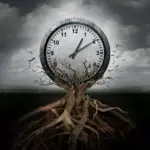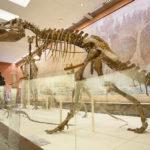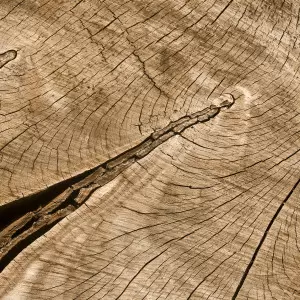
Studying Dendrochronology
Dendrochronology is the study of data from tree ring growth. Due to the sweeping and diverse applications of this data, specialists can come from many academic disciplines. There are no degrees in dendrochronology because though it is useful across the board, the method itself is fairly limited. Most people who enter into studying tree rings typically come from one of several disciplines:
- Archaeology - for the purpose of dating materials and artefacts made from wood. When used in conjunction with other methods, tree rings can be used to plot events.
- Chemists - Tree rings are the method by which radiocarbon dates are calibrated.
- Climate Science - particularly in the field of palaeoclimatology where we can learn about the environmental conditions of the past, locally or globally, based on what the tree rings are telling us. By extension, this can also teach us about climate change in the future
- Dendrology - which also includes forestry management and conservation. Dendrologists are tree scientists and examine all aspects of trees (1). Tree rings can tell them about the present local climate
Though dendrochronology also has uses for art historians, medieval studies graduates, classicists, ancient and historians due to the necessity to date some of the materials that the fields will be handling in their research projects. Typically, a bachelor's degree in any of the above disciplines are enough to study the data that comes out of dendrochronology.
A Few Notes on Trees
Trees are a ubiquitous form of plant life on planet Earth. They are the lungs of the world, breathing in carbon dioxide and breathing out the oxygen on which animal life depends. They live in all sorts of conditions too: in temperate and tropical areas and in arid locations, from mountain landscapes to the rainforests of the equator and the temperate uplands of Scandinavia, they are everywhere. They are used for decoration in parks and gardens all over the world. They come in all shapes and sizes from the smallest saplings up to the colossal redwoods of North America - it could be said that we take them for granted, yet they are vital to teaching us about many aspects of our past.
Trees evolved around 380 million years ago (2). Before then, tree ancestors may have looked slightly tree-like but they were not trees in any proper sense. The dawn of the age of true trees came with the evolution of wood in the late Devonian period. Before this, their ancestors would have a recognisable tree form, believed to be that of a giant type of fern that began the process of developing a woody stem. Wood helps the developing tree to stay strong as it gets older and grows upwards, building new branches and drinking in more sunlight for photosynthesis reproduction. Wood is a solid and strong material as we all know, valued for its longevity and strength. Each season of growth (typically annual but not always, we will examine this problem later) a new ring is set down in the body of the tree. We can see this in any tree stump, a series of concentric rings circling the heart wood and fanning out towards the edge. Naturally, the outer rings represent the youngest years of the tree and you may notice that not all rings are uniform - some are thinner, some thicker, some light and some dark. These represent growth patterns that reflect the conditions of the season or the year (4) and it is these rings on which the entire study of dendrochronology is based.
What is Dendrochronology?
Dendrochronology is the study of the growth of tree rings and we can learn much from their study. We can date organic archaeological material and create a chronological record against which artefacts can be dated (3). There is much we can learn about the past climate, how freak season-long weather conditions, or periods of climate change have affected tree growth and how it may affect our climate in future. American Astronomre A E Douglass, who had a strong interest in studying the climate, developed the method around 1900 (4). He theorised that tree rings could be used as proxy data to extend climate study back further than had previously been permissible. He was right, and the more trees that were added to the record, the greater the size of the data could be extrapolated and the more complete picture we could build of our past climate. It was not until the 1970s that archaeologists saw the benefits of the use of tree ring data in their own field (8), even though Douglass himself had used his method to date many prehistoric North American artefacts and monuments that had previously not been satisfactorily placed into a definite chronology.
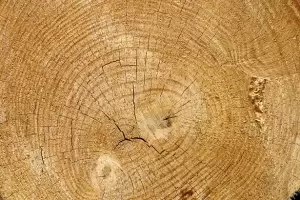 In each growth season, trees create a new ring that reflects the weather conditions of that growth season. On its own, a single record can tell us only a little about the environmental conditions of the time in a specific year of the growth of the tree, and of course the age of the tree at felling, but when we put hundreds and thousands of tree-ring records together, it can tell us a lot more. Most importantly, assuming there are no gaps in the record (and even if there are short gaps), it can tell us the precise year that a certain tree ring grew (4). The potential then, even with these two simple sets of data that we may extrapolate from the tree ring data, is enormous. It is an accurate and reliable dating method with a large number of uses in environmental studies, archaeology and everything in between.
In each growth season, trees create a new ring that reflects the weather conditions of that growth season. On its own, a single record can tell us only a little about the environmental conditions of the time in a specific year of the growth of the tree, and of course the age of the tree at felling, but when we put hundreds and thousands of tree-ring records together, it can tell us a lot more. Most importantly, assuming there are no gaps in the record (and even if there are short gaps), it can tell us the precise year that a certain tree ring grew (4). The potential then, even with these two simple sets of data that we may extrapolate from the tree ring data, is enormous. It is an accurate and reliable dating method with a large number of uses in environmental studies, archaeology and everything in between.
The method has gone from strength to strength and is now a vital method across multiple disciplines. From the 1980s, several seminal studies began at the University of Arizona (6), (7) studying the bristlecone pine of California and hohenheim oak in Germany. Thanks to the work of these studies, we now have an 8,600 year chronology for the bristlecone pine and in the region of 12,500 year chronology for the oak. This enormous and comprehensive data set is fundamental to both European and North American studies of the palaeoclimate and prehistory (8).
Dendrochronology Defining Principles (3):
- Uniformity - that any individual tree ring record may be calibrated against the sum total of the existing record in order that it can be placed in the chronology. When calibrated, we should be able to tell precisely which year a certain ring was created
- Limiting factors - that certain weather and climate conditions have an effect on the tree ring growth in any given year or season
- Aggregation - The strength of the tree ring record is that variations for local conditions are taken into account and any tree ring data set should slot nicely into the existing record
- Ecological amplitude - Certain tree species will only grow in certain areas. Some like wet, salty soil and others prefer dry, acidic soil; there are preferences for temperature, humidity and most have an elevation limit. The best records are those taken from the margins of the land that the species prefer because it is here we see the most variations in tree ring growth
There is one major drawback to dendrochronology and that is that we can only date the rings in the tree. This says nothing about either when the particular tree was felled, nor about the date it was used (8). In past times, good quality timber may have been reused (10) and for the archaeologist, it is important to check other records against the new data. Some trees are also better than others for study (5).
Notes on Reliability
Tree species vary greatly. In this article we make the assumption that growth is annual with a distinct growing season. Most tree species are reliable; oak is the most reliable tree type for tree rings - with not a single known case of a missing annual growth ring. Alder and pine are notorious for occasionally “missing a year” which is confusing enough without the fact that those species also sometimes “double up”, by having two rings in the same growth season (8). Birch and willow are not used at all because of the erratic nature of their growth cycle. Since the changes to the climate since the industrial revolution, some of the more recent dendrochronology records have become erratic (9) and in higher elevations, tree ring data has declined - we are seeing more variability than ever before (11).
In times before we had modern treatment of wood, people often drained trees of sap after felling and prior to use of the timber. The removal of the sap, and sometimes the heartwood, can seriously affect the wood's reliability as an artefact for dating (10).
A good dendrochronology study depends heavily on a lack of a repeated pattern. We expect, due to the changing nature of the climate, that each year will have a distinct pattern in the record (9). No pattern is likely to be repeated perfectly but it is certainly possible. All permutations must be examined and, if necessary, check the record against known external information.
Radiocarbon Dating
Part of the dendrochronological record is also to measure the amount of carbon in the tree sample, because of this lengthy record we will know the exact date that a tree ring was created inside the living organism. This ongoing record then, is vital to dating organic material through radiocarbon dating. The amount of radiocarbon-14 isotope in the artefact is compared against tree ring data for calibration, and it is always calibrated against organic material of known age (8). The comprehensive nature of the tree ring record is the perfect database against which to calibrate when we are trying to date organic materials. Most records will be unique and this should, in theory, give an absolute date for the artefact; if they have an identical level of the isotope, we can safely conclude that they are of the same age (12). Finding a precise year is rarely so clear-cut so a range of dates is selected, hence that radiocarbon dates always come with an error factor. 4750BP +/-30 years for example.
Uses in Archaeology
Sweet Track - it is known as “The Oldest Footpath in the World” which is a curious title not given out lightly. It is certainly the oldest datable footpath in the world if we define footpath as something artificial and deliberately created for the purpose of getting around a geographical area, rather than a path that has evolved from trampling.
Until the 1980s, it was notoriously difficult to date waterlogged archaeological sites, which was frustrating for researchers because organic material such as wood rarely finds itself in areas where it might easily survive. Until this time, there was next to no chronology for the prehistoric period in England (15, p210). Dendrochronology helped this enormously and when part of the Sweet Track was found in waterlogged soil on the Somerset Levels, it gave researchers into the Iron Age and earlier periods hope that over the following decades was certainly realised. The Somerset Levels were waterlogged most of the year in prehistoric times, not drained until the post-medieval period, and the track ran for nearly 2km from high ground to what was then an island on the levels (14). The tree ring data taken from some of the surviving extensive timbers (that survived because they were waterlogged) managed to effectively date the track itself and settlements nearby to around 3806BC at the time of completion (15, p218). This was a date that researchers suspected, albeit far more broadly than before confirmation, but from that point dendrochronology became a fundamental tool in dating archaeological remains.
Uses in Climate Studies
In the fight against climate change, it is to the past that we look in order to work out what our future might look like. The study of tree ring data is vital for understanding what our regional and global palaeoclimate looked like at any time, especially in light of the lack of other sources where we might get such information. The method has undergone immense improvement in the last 20 years. Where most climatologists look at how humans are affecting the climate, dendrochronology for climate science is focussed on the changes on vegetation that results from the natural processes of climate chang (16 p129-130). The method of change may have been different, but the results are the same and it can tell us much about increasing levels of carbon in the past. In this, it is vital to understanding what a post-climate change world will look like, particularly on trees, and the effects on tree growth in the future.
Of particular interest to climatologists are the two events known as the Little Ice Age (LIA) and Medieval Warming Period (MWP); both were periods of which the North Atlantic area - for several hundred years - experienced unusual climate conditions. They both had a profound effect on the climate of Europe and eastern North America. In Europe where there is a paucity of the long-lived trees that are far more common in the Americas (16 p132-133), the data from the LIA and MWP are fundamental to understanding modern climate change. In North America, the opposite is true as we can look far back into the palaeoclimate record, often numbering in the thousands of years, for data over a much longer period.
- http://www.academia.edu/4470066/Wood_anatomy_and_evolution_a_case_study_in_the_Bignoniaceae
- http://dendro.cornell.edu/whatisdendro.php
- http://www.ltrr.arizona.edu/lorim/good.html
- https://journals.uair.arizona.edu/index.php/radiocarbon/article/view/4172
- https://journals.uair.arizona.edu/index.php/radiocarbon/article/view/787
- http://dendro.cornell.edu/articles/kuniholm2000.pdf
- http://arizona.openrepository.com/arizona/bitstream/10150/303131/1/ltrr-0064.pdf
- http://www.radiocarbon.com/tree-ring-calibration.htm
- http://www.bosci.net/papers/sweettrackdate.pdf
- http://earthsciences.ucr.edu/gcec_pages/docs/geo224/Martinelli%202004-GlbPlnChg-Climate%20from%20dendrochronology.pdf
- Guide to Parasitology - November 19, 2018
- Deserts as Ecosystems and Why They Need Protecting - November 19, 2018
- Conservation: History and Future - September 14, 2018
Related Articles
Featured Article
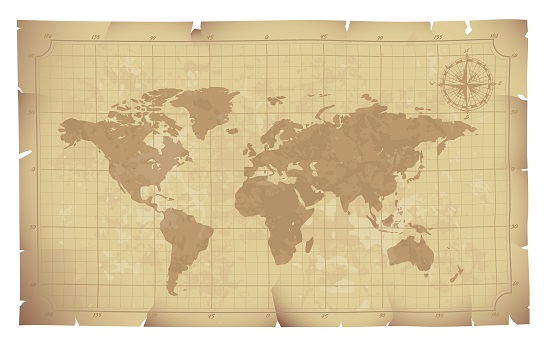
Cartography: More Than a View From Above


